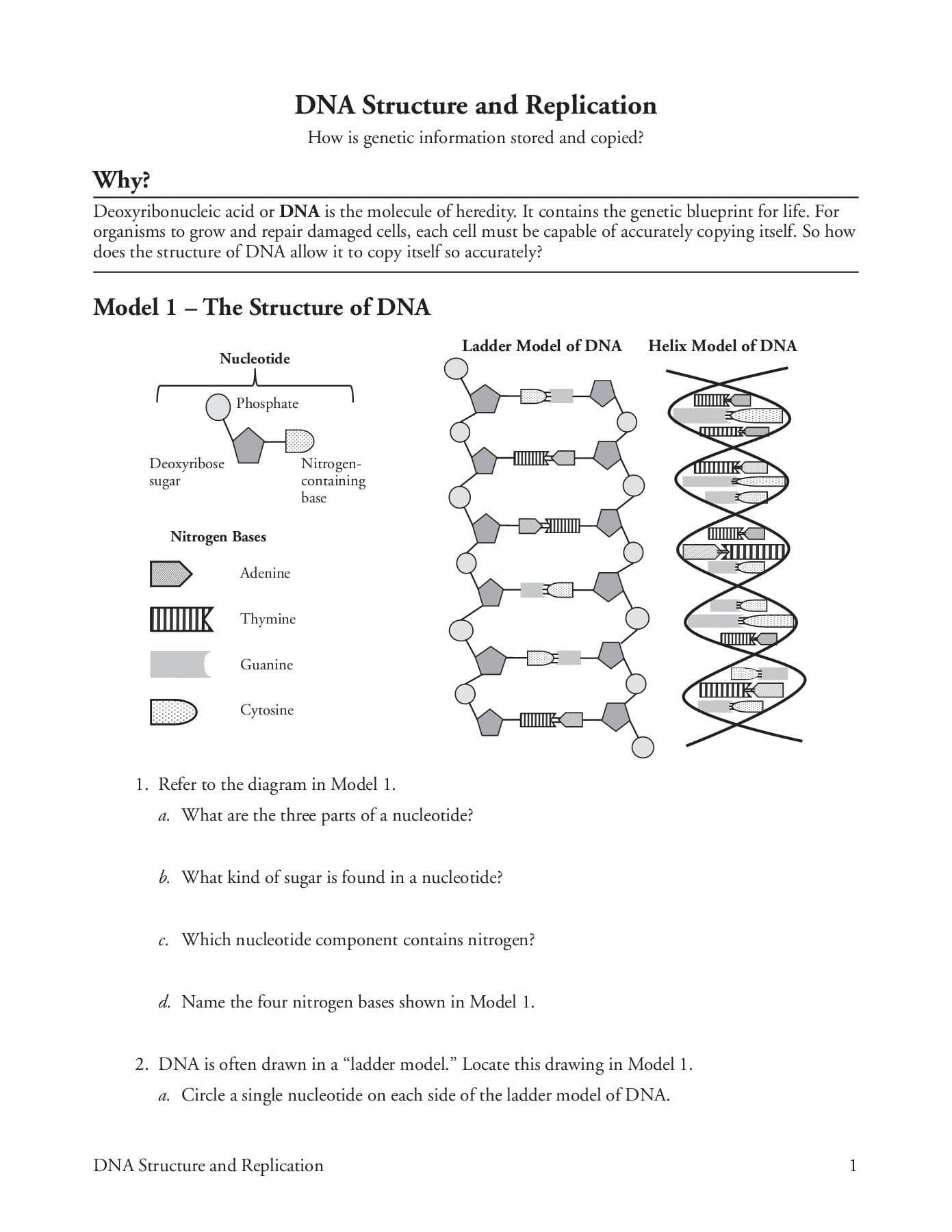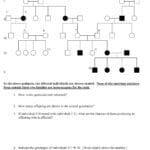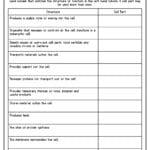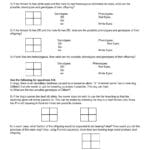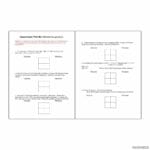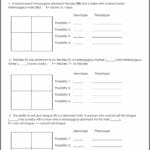Decoding DNA Replication: A Worksheet-Based Approach
DNA replication, the biological process of copying DNA, is essential for life. Just like a copy machine duplicates documents, DNA replication ensures every new cell receives a complete set of genetic instructions. This guide explores how DNA replication worksheets can be powerful tools for understanding this intricate molecular dance. These worksheets provide a structured, hands-on approach to learning, reinforcing key concepts and catering to various learning styles. They break down the complex process step by step, making it easier to digest and remember. Genetic inheritance may not be the sole factor in determining one’s physical attributes and abilities. However, it does play a significant role in our skill-related fitness. Learn more about the role of heredity in skill-related fitness.
Types of DNA Replication Worksheets: Exploring Different Approaches
Just as there are various learning styles, there’s a variety of DNA replication worksheets tailored to different approaches:
-
Labeling Diagrams: These worksheets present visual representations of DNA replication, requiring students to identify and label key components like enzymes and DNA strands. This visual approach helps solidify understanding of the molecular players and their roles. Imagine labeling a DNA strand as it splits and replicates–it’s like you’re right there in the cell, witnessing the magic of life unfold!
-
Fill-in-the-Blanks: These exercises test knowledge by having students complete sentences about DNA replication steps and key vocabulary. This reinforces learning and helps identify areas requiring further study.
-
Short Answer Questions: These worksheets encourage deeper understanding by requiring students to explain concepts in their own words. This promotes critical thinking and helps synthesize learned information.
-
Critical Thinking Activities: These challenge students to apply their knowledge to problem-solving scenarios related to DNA replication. This helps develop analytical skills and a deeper appreciation for the complexities of the process.
- Multiple-Choice Questions: These are excellent for quick assessments and review, allowing students to test their comprehension and identify areas needing more focus.
- Matching Activities: These help connect key terms with their definitions, reinforcing vocabulary and building a foundation for understanding more complex concepts.
Why Use DNA Replication Worksheets? Unlocking the Benefits
DNA replication worksheets offer several advantages:
- Reinforced Learning: They solidify concepts by providing hands-on practice, much like building a wall brick by brick.
- Self-Assessment: Worksheets act as a mirror, reflecting a student’s understanding and highlighting areas needing improvement.
- Active Learning: They encourage active engagement with the material, leading to more effective and memorable learning.
Maximizing Learning with Worksheets: Tips and Strategies
Here’s how to get the most out of DNA replication worksheets:
- Combine and Conquer: Integrate worksheets with other learning methods like lectures, discussions, and online simulations for a holistic approach.
- Personalized Pace: Adapt worksheets to individual needs, breaking down complex concepts or offering advanced challenges as needed.
- Tech Integration: Explore interactive online resources and virtual labs to bring DNA replication to life.
The Semi-Conservative Nature of DNA Replication: A Closer Look
DNA replication is a semi-conservative process, meaning each new DNA molecule consists of one original (parent) strand and one newly synthesized (daughter) strand. This ensures accurate transmission of genetic information while allowing for variations and adaptations over generations.
Key Enzymes in DNA Replication: The Molecular Players
Several key enzymes orchestrate the intricate dance of DNA replication:
- Helicase: Unwinds the DNA double helix, creating the replication fork.
- DNA Polymerase: Adds nucleotides to the new DNA strand, following the base-pairing rules (A with T, C with G).
- Ligase: Joins Okazaki fragments on the lagging strand, creating a continuous DNA molecule.
- Primase: Synthesizes RNA primers, providing a starting point for DNA polymerase.
- Topoisomerase: Relieves strain in the DNA helix ahead of the replication fork, preventing tangling and breakage.
- Single-strand Binding Proteins: Stabilize the separated DNA strands, keeping them single-stranded and accessible for replication.
Steps of DNA Replication: A Step-by-Step Guide
DNA replication unfolds in three main stages:
-
Initiation: The process begins at specific sites called origins of replication. Helicase unwinds the DNA double helix, creating a replication fork where the new strands will be synthesized.
-
Elongation: DNA polymerase adds nucleotides to the new strands, using the parent strands as templates. The leading strand is synthesized continuously, while the lagging strand is synthesized in short fragments called Okazaki fragments. This difference arises because DNA polymerase can only add nucleotides in the 5′ to 3′ direction, and the two DNA strands run antiparallel to each other.
-
Termination: Replication ends when the entire DNA molecule has been copied. The two new DNA molecules, each identical to the original, separate and become part of the two new daughter cells.
DNA Replication Worksheets and Resources: A Curated Collection
Numerous excellent resources offer free printable DNA replication worksheets and answer keys:
- The Biology Corner: Provides a labeling activity and related questions, ideal for visual learners.
- Mrs. Bisch’s Biology: Offers a worksheet focusing on the steps and reasons for DNA replication.
- Quizizz: Features a collection of interactive worksheets on DNA replication, offering engaging activities and assessments. There are over 50 worksheets available on DNA structure and replication, making it a valuable resource.
- NGSS Life Science: Provides standards-aligned resources, including worksheets, labs, and lesson plans for educators.
Additional valuable resources include:
- Weebly: Some teachers create and share their DNA replication worksheets and lesson plans on Weebly.
- Worksheet Zone: This website sometimes offers grade-specific printable worksheets, but availability can vary.
Tips for Effective Use: Optimizing Worksheet Integration
- Integrate with other learning activities: Combine worksheets with lectures, discussions, and multimedia resources for a well-rounded learning experience.
- Differentiate instruction: Adapt worksheets to different learning styles and levels of understanding. Some students may benefit from simplified versions or visual aids, while others might be ready for more challenging activities. The use of varied learning materials can be highly beneficial.
- Use online platforms: Interactive simulations and virtual labs can enhance engagement and provide immediate feedback. Platforms like Quizizz offer interactive online worksheets and quizzes, adding a dynamic element to the learning process.
Beyond the Basics: Advanced Concepts and Ongoing Research
Advanced DNA replication worksheets delve into topics like Okazaki fragment maturation, telomere replication, DNA repair mechanisms, epigenetic influences, and the 3D organization of the genome. These topics explore the intricacies of the process and connect to current research areas.
Our understanding of DNA replication, while extensive, is constantly evolving. Ongoing research is exploring areas like the precise mechanisms of various enzymes, the influence of the cellular environment on replication, and the role of replication errors in diseases like cancer. Some scientists believe that variations in the replication process may exist in different cell types or organisms. This highlights the dynamic nature of scientific knowledge and encourages continued exploration.
- Unveiling Bernhard Caesar Einstein’s Scientific Achievements: A Legacy in Engineering - July 15, 2025
- Uncover who is Jerry McSorley: CEO, Family Man, Business Success Story - July 15, 2025
- Discover Bernhard Caesar Einstein’s Scientific Contributions: Unveiling a Legacy Beyond Einstein - July 15, 2025
